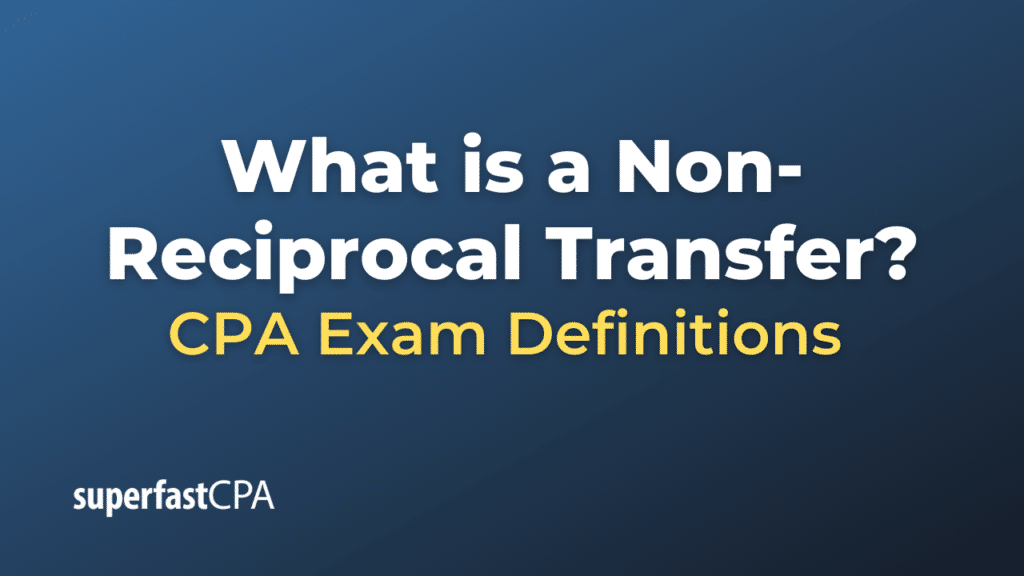Non-Reciprocal Transfer
A non-reciprocal transfer is a type of transaction where one entity provides something of value to another entity, without receiving anything of equal value in return. Non-reciprocal transfers are commonly seen in the context of charitable donations or gifts, where one party gives money or assets to another party without expecting anything in return.
Another common example of non-reciprocal transfers is in intercompany transactions within a group of entities under common control. One entity may transfer resources, such as cash or other assets, to another entity without expecting to receive something of equal value back.
In the world of international economics, non-reciprocal transfers could refer to aid, grants, or remittances sent from one country to another, without a reciprocal transfer in return.
It’s important to note that while non-reciprocal transfers involve the giving of something without an equivalent exchange, they’re not necessarily devoid of benefits for the giver. For instance, charitable donations can provide tax benefits to the donor, and intercompany transfers can help achieve strategic objectives within a group of companies. Similarly, countries may provide international aid with the expectation of political goodwill or enhanced diplomatic relations.
Example of a Non-Reciprocal Transfer
Here are a few examples:
- Charitable Donations: Let’s say an individual donates $500 to a charity to support their cause. This is a non-reciprocal transfer because the individual doesn’t expect to receive anything of equivalent value in return. They may receive a thank you note or a small token of appreciation, but these are not of equal monetary value to the $500 donated.
- Intercompany Transactions: Assume a parent company transfers $10,000 to one of its struggling subsidiaries to help it stay afloat. The parent company doesn’t expect to receive anything of equal value in return from the subsidiary. This is a non-reciprocal transfer aimed at achieving a larger strategic objective – keeping the subsidiary operational and protecting the overall corporate group.
- International Aid: Consider a developed country, such as the United States, giving financial aid to a developing country to help it improve its infrastructure or education system. The U.S. does not receive anything of equivalent value in return. While the U.S. may expect some form of political goodwill or strengthened diplomatic relations, these cannot be measured in exact monetary terms, making this a non-reciprocal transfer.
- Gifts: If a person gives a birthday gift to a friend, they don’t usually expect a gift of equal value in return (unless it’s their birthday too). The joy of giving and making their friend happy is the main goal here, and it’s another everyday example of a non-reciprocal transfer.
Remember, the key characteristic of a non-reciprocal transfer is that one party gives something of value without receiving something of equal value in return. While there may be indirect benefits, these are usually not measurable in the same way as the value of what was given.













